



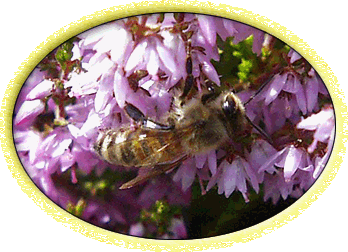
calluna vulgaris
and how to get the honey from that plant.....
Ling Heather, calluna vulgaris, Is a small plant growing on poor soil in forests and on boggy ground mainly in the west and north of Sweden. It produces an aromatic light brown honey with special characteristics.
The summer of 1998 I moved
some of my hives to Heather for the first time. After a bad summer with
a small honey crop, it was in an atempt to improve the result I decided
to try to get one more crop in the autumn from some of the hives.
Plenty of rain had left moisture in the ground even up on the high country
where the Heather is growing in abundance. So it looked like a good chance
to get some honey this summer. Heather is not producing so much every
year, there are good and bad seasons. A friend beekeeper that lives near
helped me to find places to put the hives on. We spent a day driving around
on the logging roads in the forest looking for suitable places that we
could reach by car.
The ling starts to flower
just as the summer flow ends here, so we had to be quick to get the hives
to the new location. And only the strong hives would be worth to move,
so we would have to go through the yards to find them.
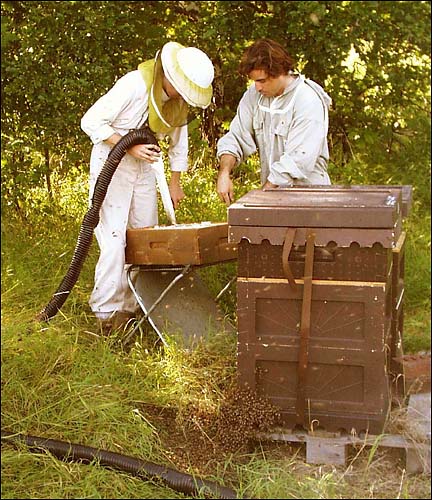 |
The hives are being
prepared for moving. The bees are blown out and the full boxes taken
home for extracting. An empty box is then put on every hive to give
the bees space. The honey boxes not ready for extracting are stacked up on the hives that are left in the yards. |
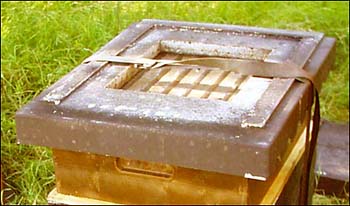 |
Another bottom board with the mesh instead of the lid on top supplies extra ventilation during transport. |
| An early morning before the bees start flying we are loading the last hives on the trailer for the 150 km trip to the forest. The hives are light when we removed all honey so it's no problem to stack them up high. | 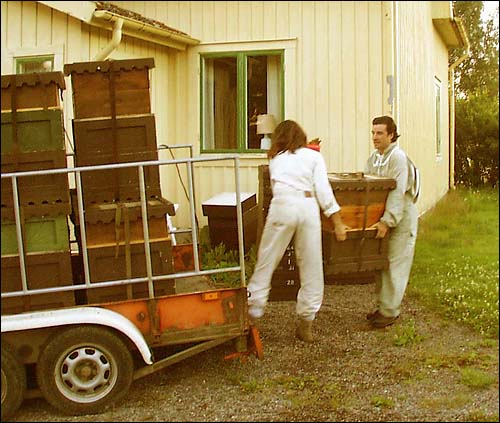 |
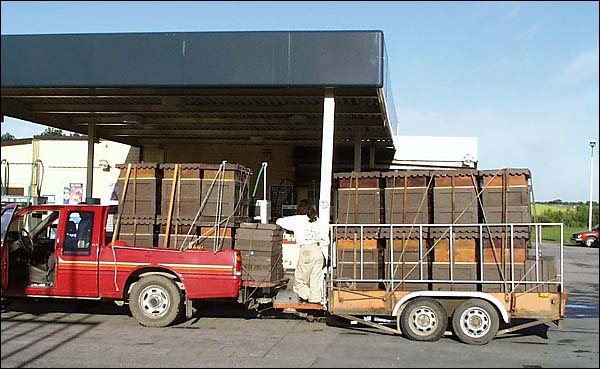
And a good load it is for my small vehicle......
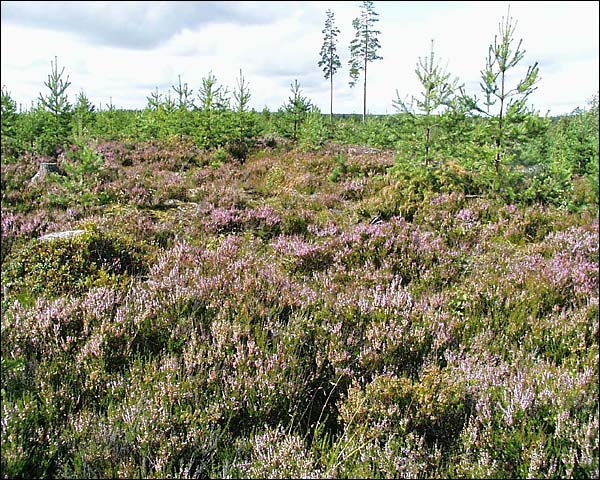
Arriving to a clearing in the forest as the Heather starts to flower.
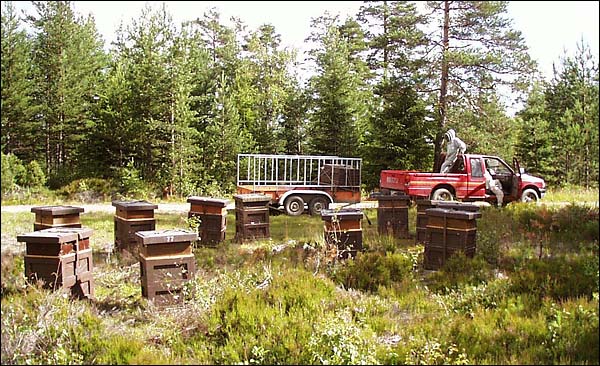
One of the yards with 12 hives each up a logging road.
We made 2 trips and moved 70 hives that were placed in 6 yards with a distance of 1-2 km from each other.
 |
After 2 weeks we went
to check them and see if they had done anything. When we arrived to the bees they were flying and working the flowers. When there is nothing else for the bees up in the forest, they had to be going for the Heather. Lifting some hives to feel the weight gave the answer; there was Honey! |
| Eager to see the result we opened up several hives to have a taste of the Heather Honey. The smell from the hive gave no doubt about what there was inside. | 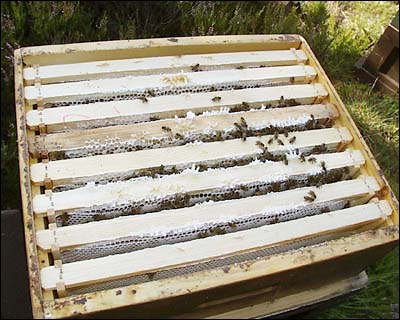 |
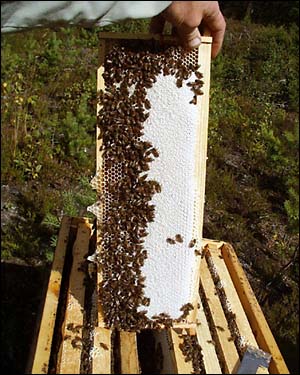 |
The most beautiful white cappings are produced on a Heather Honey flow. |
| This time of year, almost autumn, the bees are storing Honey as close to the brood area as possible. They know nothing more is coming in, and want the honey close for winter consumption. This means we have to go through the whole hive to get the honey from the frames in the bottom boxes. And the brush is the only suitable way to get the bees off the frames. | 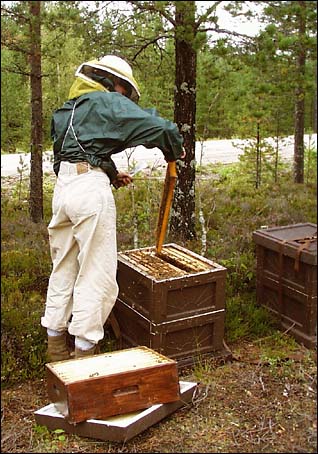 |
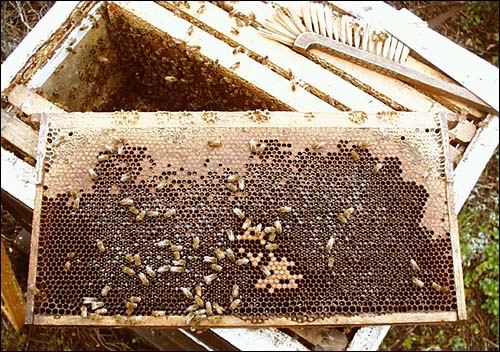 |
There are always some frames with mixed honey and brood. |
| Heading for home with the last of the hives on a rainy September day. | 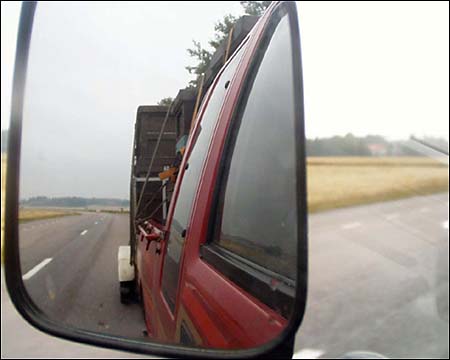 |
Next is to get the honey out of the frames....



